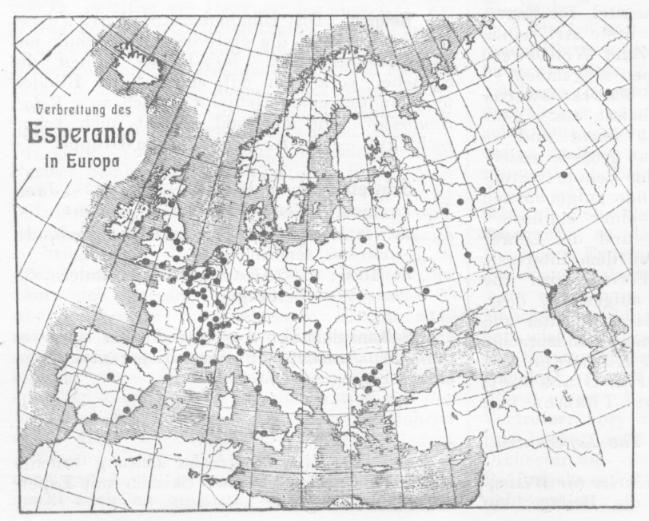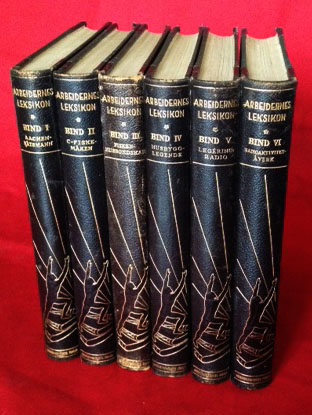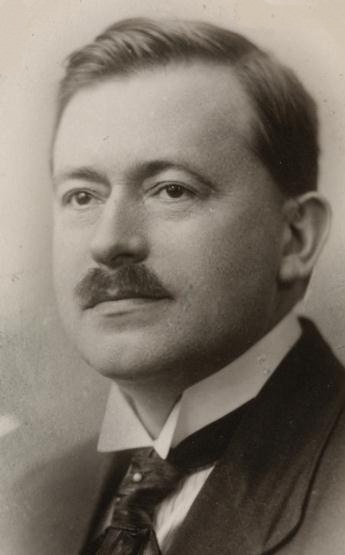|
Arbeidernes Esperantoforbund
Arbeidernes Esperantoforbund ( no, Workers' Esperanto Association) was an association in the Norwegian labour movement that worked for the introduction of the Esperanto language. Arbeidernes Esperantoforbund was established on 30 August 1924. Most members were also members of the Sennacieca Asocio Tutmonda. Hans Aas was a driving force. At its establishment it was supported verbally by the Labour Party, the Social Democratic Labour Party, the Communist Party and the Norwegian Confederation of Trade Unions The Norwegian Confederation of Trade Unions ( no, Landsorganisasjonen i Norge, LO) is a national trade union center, decidedly the largest and probably the most influential umbrella organization of labour unions in Norway. The 21 national unions .... This, writes a historian, was a "rare instance of a unity front" in Norway. Arbeidernes Esperantoforbund's periodic publication was ''Arbeider-Esperantisten''. References Organizations established in 1924 Language organisat ... [...More Info...] [...Related Items...] OR: [Wikipedia] [Google] [Baidu] |
Esperanto Language
Esperanto ( or ) is the world's most widely spoken constructed international auxiliary language. Created by the Warsaw-based ophthalmologist L. L. Zamenhof in 1887, it was intended to be a universal second language for international communication, or "the international language" (). Zamenhof first described the language in '' Dr. Esperanto's International Language'' (), which he published under the pseudonym . Early adopters of the language liked the name ''Esperanto'' and soon used it to describe his language. The word translates into English as "one who hopes". Within the range of constructed languages, Esperanto occupies a middle ground between "naturalistic" (imitating existing natural languages) and ''a'priori'' (where features are not based on existing languages). Esperanto's vocabulary, syntax and semantics derive predominantly from languages of the Indo-European group. The vocabulary derives primarily from Romance languages, with substantial contributions from Ge ... [...More Info...] [...Related Items...] OR: [Wikipedia] [Google] [Baidu] |
Sennacieca Asocio Tutmonda
Sennacieca Asocio Tutmonda (SAT; en, World Anational Association) is an independent worldwide cultural Esperanto association of a general left-wing orientation. Its headquarters are in Paris. According to Jacques Schram, chairman of the Executive Committee, the membership totalled 881 in 2003. In 2006 SAT had 724 members. In 2015-2016 there were 525. SAT uses Esperanto as its working language and aims through the use of Esperanto to enable progressive individuals, organizations and workers of all countries to exchange ideas and meet on the basis of equality across national barriers. Members of SAT are involved in socialist, anarchist, peace, trade union, anti-nationalist, feminist and environmental activities, among others. History SAT was founded in 1921 by Eugène Lanti (pseudonym of Eugène Adam) and others as an organisation of the workers' Esperanto movement. It was the largest and most active between the two World Wars. At its high point in 1929-1930 it had 6524 me ... [...More Info...] [...Related Items...] OR: [Wikipedia] [Google] [Baidu] |
Arbeidernes Leksikon
(''The Laborers' Encyclopedia'') is a Norwegian encyclopedia published in six volumes in the 1930s. It was the first reference book in Norwegian to have a pronounced class bias, and the first encyclopedia outside of the Soviet Union to be directed specifically at the working class. The publication had a connection with the Norwegian labor movement's goal to spread knowledge among the working and lower class, and in doing so could break the monopoly the middle class had on the dissemination of information in society. They thought that the existing encyclopedias had a middle class bias. The idea of such an encyclopedia came within the group that produced the laborers' magazine ''Arbeidermagasinet''. This magazine was produced from 1927 by members of the Communist Party of Norway (founded 1923). Communist Party member Jakob Friis was hired as chief editor of the encyclopedia in 1930. (description of research project) The work was published by the ''Arbeidermagasinet'''s publish ... [...More Info...] [...Related Items...] OR: [Wikipedia] [Google] [Baidu] |
Hans Aas
Hans Aas (22 September 1880 – 5 August 1960) was a Norwegian trade unionist. Aas was born in Tromsø. He joined his first trade union in 1906, and chaired the union from 1914 to 1930. Having broken away from the Labour Party and joined the Communist Party in 1923, Aas later worked as a manager in the newspaper ''Arbeidet''. He was a member of the secretariat of the Norwegian Confederation of Trade Unions from 1920 to 1923, then a deputy who met regularly in the place of Ole O. Lian, then a secretariat member again from 1927 to 1929. He formed a Communist minority in the secretariat together with Elias Volan, but they were replaced in 1929. In politics, Aas was a member of Aker municipal council and chairman of Grorud Grorud is a borough of the city of Oslo, Norway. The borough contains the Ammerud, Grorud, Kalbakken, Rødtvet, Nordtvet and Romsås areas. To the north of the borough is the forest of Lillomarka. The borough is the smallest in Oslo, with fewer ... district b ... [...More Info...] [...Related Items...] OR: [Wikipedia] [Google] [Baidu] |
Arbeiderbevegelsens Historie I Norge
''Arbeiderbevegelsens historie i Norge'' ( en, History of the Workers' Movement in Norway) is a six-volume work about the labour movement history of Norway. It was released between 1985 and 1990 by Tiden Norsk Forlag. It was not the first work about the history of the Norwegian labour movement. Einhart Lorenz released the two-volume work ''Arbeiderbevegelsens historie. En innføring. Norsk sosialisme i internasjonalt perspektiv'' in 1972 and 1974. This time, a large work was planned because of the 100th anniversary of the Norwegian Labour Party in 1987. As such, it is a party history combined with the history of other important parties as well as the trade union movement. Several of the editors and writers engaged in the project were in fact members of the Labour Party, or labour movement "sympathizers". The editors of the project were Edvard Bull, Jr., Arne Kokkvoll and Jakob Sverdrup (historian), Jakob Sverdrup. The first volume, ''Arbeiderklassen blir til. 1850–1900'' was wri ... [...More Info...] [...Related Items...] OR: [Wikipedia] [Google] [Baidu] |
Norwegian Labour Party
The Labour Party ( nb, Arbeiderpartiet; nn, Arbeidarpartiet; A/Ap; se, Bargiidbellodat), formerly The Norwegian Labour Party ( no, Det norske Arbeiderparti, DNA), is a social-democratic political party in Norway. It is positioned on the centre-left of the political spectrum, and is led by Jonas Gahr Støre. It was the senior partner of the governing Red–green coalition (Norway), red–green coalition from 2005 to 2013, and its former leader Jens Stoltenberg served as the prime minister of Norway. The Labour Party is officially committed to social-democratic ideals. Its slogan since the 1930s has been "everyone shall take part" and the party traditionally seeks a strong welfare state, funded through taxes and Duty (economics), duties. Since the 1980s, the party has included more of the principles of a social market economy in its policy, allowing for privatisation of state-owned assets and services and reducing income tax Progressive tax, progressivity, following the wave of ... [...More Info...] [...Related Items...] OR: [Wikipedia] [Google] [Baidu] |
Social Democratic Labour Party Of Norway
The Social Democratic Labour Party of Norway (in Norwegian ''Norges Socialdemokratiske Arbeiderparti'') was a Norwegian political party in the 1920s. Following the Labour Party's entry into the Comintern in 1919 its right wing left the party to form the Social Democratic Labour Party in 1921. At the party convention in 1923, however, the Labour Party withdrew from Comintern, and the Communist Party of Norway was formed by the minority, who continued its affiliation with Comintern and the Soviet Union until 1991. The Social Democratic Labour Party was absorbed into the reorganised Labour Party in 1927. The youth wing of the party was the Socialist Youth League of Norway Socialist Youth League of Norway (in Norwegian: ''Norges sosialistiske ungdomsforbund''), initially founded as the Social Democratic Youth League of Norway (''Norges sosialdemokratiske ungdomsforbund''), was the youth wing of the Social Democratic .... The party sympathized with the International Working Uni ... [...More Info...] [...Related Items...] OR: [Wikipedia] [Google] [Baidu] |
Communist Party Of Norway
The Communist Party of Norway ( no, Norges Kommunistiske Parti, NKP) is a communist party in Norway. The NKP was formed in 1923, following a split in the Norwegian Labour Party. It was Stalinist from its establishment and, as such, supported the Soviet government while opposing Trotskyism. During the Second World War, the NKP initially opposed active resistance to the German occupation, in deference to the non-aggression pact between the Soviet Union and Germany. Once Germany terminated the pact and attacked the Soviet Union, the Communist Party of Norway joined the resistance. As a result of its role in the anti-Nazi struggle, the NKP experienced a brief surge in popularity immediately after the war, but popular sympathy waned with the onset of the Cold War. The ruling Labour Party took a hard line against the communists, culminating in Prime Minister Einar Gerhardsen's 1948 condemnatory Kråkerøy speech. Norwegian authorities considered the party an extremist organizatio ... [...More Info...] [...Related Items...] OR: [Wikipedia] [Google] [Baidu] |
Norwegian Confederation Of Trade Unions
The Norwegian Confederation of Trade Unions ( no, Landsorganisasjonen i Norge, LO) is a national trade union center, decidedly the largest and probably the most influential umbrella organization of labour unions in Norway. The 21 national unions affiliated to the LO have almost 1,000,000 members of a Norwegian population of 5 million. The majority of affiliated unions organizes traditional blue collar workers, but the largest affiliate is the Norwegian Union of Municipal and General Employees which makes up more than a third of all members. LO is affiliated to the ITUC and the ETUC. It was named the Workers' National Trade Union ( no, Arbeidernes Faglige Landsorganisasjon, AFL) from 1899 to 1957. Affiliated with the Labour Party throughout its history, several of LO's member unions have concurrently been member bodies in the Labour Party. The organization owns the Norwegian Labour Movement Archives and Library. Affiliates Current affiliates Former affiliates See also *L ... [...More Info...] [...Related Items...] OR: [Wikipedia] [Google] [Baidu] |
Organizations Established In 1924
An organization or organisation (Commonwealth English; see spelling differences), is an entity—such as a company, an institution, or an association—comprising one or more people and having a particular purpose. The word is derived from the Greek word ''organon'', which means tool or instrument, musical instrument, and organ. Types There are a variety of legal types of organizations, including corporations, governments, non-governmental organizations, political organizations, international organizations, armed forces, charities, not-for-profit corporations, partnerships, cooperatives, and educational institutions, etc. A hybrid organization is a body that operates in both the public sector and the private sector simultaneously, fulfilling public duties and developing commercial market activities. A voluntary association is an organization consisting of volunteers. Such organizations may be able to operate without legal formalities, depending on jurisdiction, includin ... [...More Info...] [...Related Items...] OR: [Wikipedia] [Google] [Baidu] |
Language Organisations Of Norway
Language is a structured system of communication. The structure of a language is its grammar and the free components are its vocabulary. Languages are the primary means by which humans communicate, and may be conveyed through a variety of methods, including spoken, sign, and written language. Many languages, including the most widely-spoken ones, have writing systems that enable sounds or signs to be recorded for later reactivation. Human language is highly variable between cultures and across time. Human languages have the properties of productivity and displacement, and rely on social convention and learning. Estimates of the number of human languages in the world vary between and . Precise estimates depend on an arbitrary distinction (dichotomy) established between languages and dialects. Natural languages are spoken, signed, or both; however, any language can be encoded into secondary media using auditory, visual, or tactile stimuli – for example, writ ... [...More Info...] [...Related Items...] OR: [Wikipedia] [Google] [Baidu] |
Esperanto Organizations
Esperanto ( or ) is the world's most widely spoken constructed international auxiliary language. Created by the Warsaw-based ophthalmologist L. L. Zamenhof in 1887, it was intended to be a universal second language for international communication, or "the international language" (). Zamenhof first described the language in '' Dr. Esperanto's International Language'' (), which he published under the pseudonym . Early adopters of the language liked the name ''Esperanto'' and soon used it to describe his language. The word translates into English as "one who hopes". Within the range of constructed languages, Esperanto occupies a middle ground between "naturalistic" (imitating existing natural languages) and ''a'priori'' (where features are not based on existing languages). Esperanto's vocabulary, syntax and semantics derive predominantly from languages of the Indo-European group. The vocabulary derives primarily from Romance languages, with substantial contributions from Germ ... [...More Info...] [...Related Items...] OR: [Wikipedia] [Google] [Baidu] |






